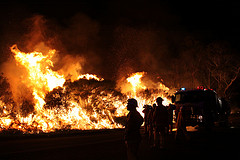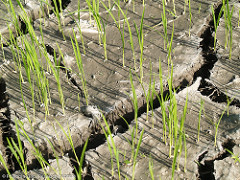While people in much of the UK and North America have suffered through severe winter floods, the situation is the opposite for nations in the Southern Hemisphere. In places like Madagascar, Rwanda, South Africa, Australia, and New Zealand; it is now early summer.
And in some places it’s already brutal.
Australia
 She is burning once again, and to quote one Australian, “it’s not just the temperatures”.
She is burning once again, and to quote one Australian, “it’s not just the temperatures”.
The western part of the country has seen its worst fire season ever. Only this past week bushfires destroyed much of the rural town of Yarloop south of Perth and threatened others.
Firefighters are also said to be battling to gain control in one of the southern Perth suburbs. Fires further south flared up in the Esperance forest area and on the opposite side of Australia in Adelaide Hills. As if all that were not enough, torrential summer rains at the same time caused major flooding in New South Wales.
A temperature record was also broken. The Sydney Morning Herald newspaper on January 6, 2016 said,
“Australia has posted its hottest end to any year as the impact of one of the biggest El Ninos on record began to be felt across the continent.”
Most of the rest of Asia is in the Northern Hemisphere.
Philippines
For this country and for others near the equator in the southern part of the Northern Hemisphere, two tropical seasons exist — wet and dry.
 For Filipinos, the cool dry season is occurring now and the hot dry season, equivalent to summer for Filipinos, begins in March and runs through June. The forecast does not look good.
For Filipinos, the cool dry season is occurring now and the hot dry season, equivalent to summer for Filipinos, begins in March and runs through June. The forecast does not look good.
On January 6, 2016 the Manila Bulletin newspaper reported,
“The impact of the ongoing strong El Niño phenomenon will likely linger until mid-2016, with 85 percent of provinces expected to suffer from drought by end of April, according to the Philippine Atmospheric, Geophysical and Astronomical Services Administration (PAGASA).”
Neighboring Asian Nations
The ongoing drought is predicted to worsen in nearby Southeast Asian areas already hit hard. Without enough rain, 2016 prices for rice and other crops grown there will escalate. Yet, the impact of weather extremes doesn’t stop at that.
In times of terrible growing conditions, farmers suffer by not having their own produce to eat or a source of income to buy food. But, ultimately, the ripple effect touches everyone.
On November 1st in 2015, a Business Insider news website headline read,
“This is what El Niño will do to the global economy“
The equities analysts at Macquarie, according to Business Insider, feel they know the answer and it’s mixed.
In hindsight, how accurate will their regional forecasts prove to be? What exactly will weather extremes do to world politics and, in turn, to our individual lives? Time will paint us a picture; and, no doubt, it won’t be a very rosy one.
Photo Credits: AU Fire courtesy of NSW RFS Media Services, Drought courtesy of Philippine Rice Research Institute; Licenses: CC BY-NC-ND 2.0
Read our related article dated March 03, 2015